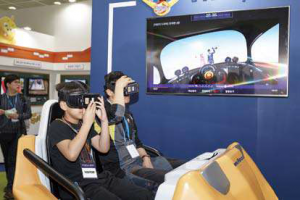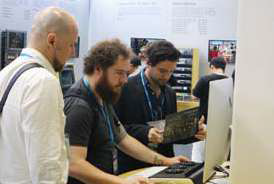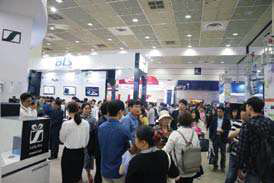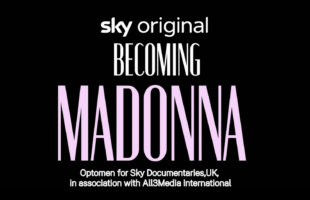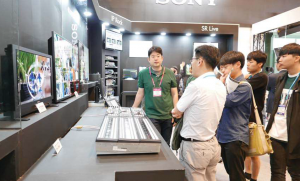
Comcast Cable’s Mark Francisco summed up the situation, saying, “If the 4K market develops, we are ready for it. His 4K output from Universal’s Tom Cruise movie Oblivion was shot with Sony F65 CineAlta 4K camera system, as well as SyFi channel’s Defiance series.
A spokesperson for Sony Korea at KOBA commented, “Given the rapidly rising demand for 4K production, we introduced a remarkable line-up of 4K devices and HDR workflow this year at KOBA. During the show, FOR-A has revealed a wide range of 12G-SDIbased devices and equipments that will form the new standard for 4K UHD production. Some of these included the processors, routers, converters and multiviewers that can be used in any production environment, including HD and 4K.” The spokesperson for the broadcasting company explained that as more and more programmes are being broadcast via the internet protocols, it is critical to determine the extent to which IP-based services will be expanded.
The gossip is that just about every major US broadcaster, including the likes of Direct TV, is looking at the possibilities of being generated by 4K transmission. Netflix’s Chief, Reed Hastings said that the influence of 4K is growing despite the fact that 4K movies are likely to be in the 45-60Gb range. He said earlier that these sizes should not present any problem for the operators or consumers. ‘’Our own original House of Cards was short in 4K. It was mastered in full HD, but the raw footage, or a good chunk of it, was shot in 4K.”
In the past years, a number of broadcasters globally have confirmed start dates for widespread testing and transmissions of 4K. Some broadcasters have successfully launched include Russia’s NTV+which broadcasted the Sochi Olympic Winter Games in 4K to cinemas and public areas. South Korea’s cable broadcasters successfully launched 4K transmission during 2014 FIFA World Cup in Brazil. It was the same with Japan’s pay-TV operator Sky Perfect. Yutaka Nagai, Sky Perfect SVP said, “We started 4K transmission in 2014 after several successful testing. There was even one channel dedicated in 4K to the FIFA World Cup soccer championship, this was followed by more such channels later. This was an expensive investment for the company but we wanted to continue in this direction. We as a platform are very enthusiastic.”
The enthusiasm was certainly shared by Ruper Murdoch’s European cluster of Sky platforms, each of which has successfully tested and launched 4K. BSkyB has launched in UHD via satellite using Sony F55 cameras and special outside broadcast truck equipped for 4K. This was initially launched for a sports programme. Sky Sports MD Barney Francis said, “Live sports have real potential for 4K. The broadcast also demonstrated the capability of or satellite platform, which is ideally placed to continue supporting high-bandwidth video.”
The 4K screen is able to offer potential benefit. It’s not just the picture quality but the other things the platform cando for broadcasters. Some industry observers expect satellites to provide the key link to viewers. SES chief commercial officer Ferdinand Kayser, explained during a press briefing that he expects Europe to be an early adopter of 4K and that sales of 4K display in Europe would top 110 million by 2025. “We at SES love innovation and are already showing 4K on satellite. We must all support (the new compression standard) which I believe is the absolute DNA of 4K because this allows highquality transmission within 20Mb of transponder space. We all recognise that satellite is the natural first step for 4K. But as an industry we must ensure that it is a true improvement in the TV experience. We must work beyond just the addition of pixels.”
UHD is the next big topic in television industry. The system will be based on ATSC 3.0 standards or the updated version of DVB. KOBA 2017 also took place at a historic moment, only 15 days before Korean TV networks were to begin airing all their programmes in Ultra-High Definition (UHD). Hence, this year’s event showcased a wide range of the latest developments in UHD related products and services. The show featured ATSC 3.0-based transmission equipment and a arrange of sophisticated IPbased UHD production and solution equipment. As usual, the show displayed a huge range of products from 4K, UHD, smart TV, mobile TV, digital contents, camera, VTR, post-production system, delivery & distribution equipment, video postproduction equipment, character generator, CATV system, internet/ satellite broadcasting equipment, audio equipment like pro audio, microphone, console, mixer and instruments, pro-light/stage equipment and others.
There were also forums where one could see how the fourth industrial technologies – Artificial intelligence (AI), augmented reality, virtual reality, the internet of things and bug data are integrated with the media industry, and how next-generation media industries will grow and evolve to turn our imagination to reality.
About 1,014 companies from 29 countries attended KOBA this year. Domestic broadcast stations (KBS, and EBS), global broadcasting/video companies(Sony, Panasonic, Canon, Ikegami, FOR-A, ARRI, Tektronix, Daehan Ultra Vision, Dongyang Digital, Road Technology, Black Magic Design, Sama GVC, Sanam Technology, YoungDo BNC, TV Logic, Compix), sound system companies (DaiKyung VASCOM, Sound solution, Yamaha, Inter-M, D Logixs, Kevic and Sama Prosound), Lighting companies(C&C LIGHTWAY and LS Media) just to name a few.
The World Media Forum at KOBA saw world leading media professionals discuss and debate several matters. They shared insights on rapidlychanging media trends and upto- the-minute technologies. The conference also offered 43 in-depth briefings on technical theories and the latest trends. At the technical demonstration hour, exhibitors demonstrated their latest equipment which was well received by the participants.
The World Media Forum was intended to shed light on some of the new tipping points where technical progress will bring and leverage the insights of international media experts in various fields to foresee the future. New emerging players making changes in the media industry with their innovative strategies took the opportunity to share their vision and global media market trends.
KOBA 2017 was co-hosted by Korea E&Ex and Korea Broadcasting Engineering & Technicians Association (KOBETA) and supported by related institutions & groups including Ministry of Science, ICT & Future Planning, the Ministry of Trade, Industry & Energy, Korea Communications Commission, KBS, EBS, OBS the acoustical Society of Korea, Korea association of Sound Artists, ETRI. It is the only specialised global exhibition related with the converging broadcast industry. The government selected this as a promising exhibition to boost the growth of Korea industry.


